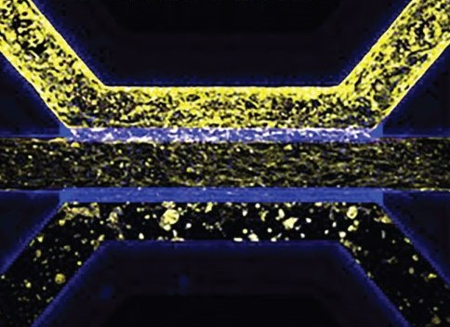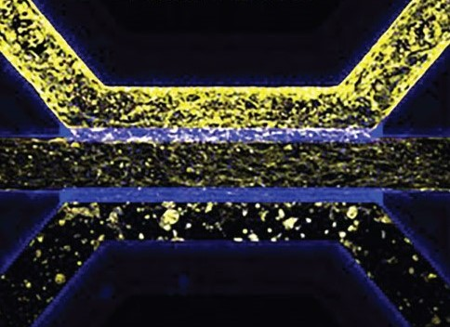The Tumor Stroma Influences Immune Cell Distribution and Recruitment in a PDAC-on-a-Chip Model

Leiden, May 10, 2023 – MIMETAS scientists develop and characterize a pancreatic ductal adenocarcinoma (PDAC) model and applied it to study the role of the endothelium and the stroma in immune cell migration.

PDAC is one of the most aggressive forms of cancer and has a very low survival rate. Immunotherapy has emerged as a promising treatment option for several types of cancer, but it has been challenging to develop effective immunotherapies for PDAC. This is mostly explained by the immunosuppressive tumor microenvironment (TME) that characterizes PDAC; specifically, stroma-secreted factors, hypoxia, desmoplasia and abnormal vasculature most likely provide a barrier for chemotherapy treatment and immune cell infiltration to the tumor core. Immune cells must first exit a blood vessel near the tumor and infiltrate the stroma to reach the tissue and exert antitumor responses. – a complex process that is often hindered in PDAC patients.
Advances in cellular and microfluidic technologies that allow in vitro systems to emulate in vivo biology of the TME have enabled progress in the study of tumor immunity of this cancer and its response to targeting. Organ-on-chip systems, in particular, enable 3D cultivation of multiple cell types, enabling cell-cell interactions, cell-matrix interactions, and flow. In this study, MIMETAS scientists established a 3D PDAC-on-a-chip model comprising an endothelial tube, pancreatic stellate cells (PSCs), and PDAC organoids. This model facilitated the investigation of the role of the TME on immune cell recruitment and its effect on preventing their interaction with pancreatic cancer cells. They found that stromal cells form a physical barrier, partly shielding the cancer cells from migrating immune cells, as well as a biochemical microenvironment, that seems to attract and influence immune cell distribution. In addition, stromal targeting by Halofuginone led to an increase in immune cell infiltration.
The development of this model is a significant breakthrough in the study of PDAC and immune cells and will support the understanding of the cellular interplay influencing the recruitment and distribution of immune cells and enhance the discovery of new strategies to treat this immunosuppressive cancer.
